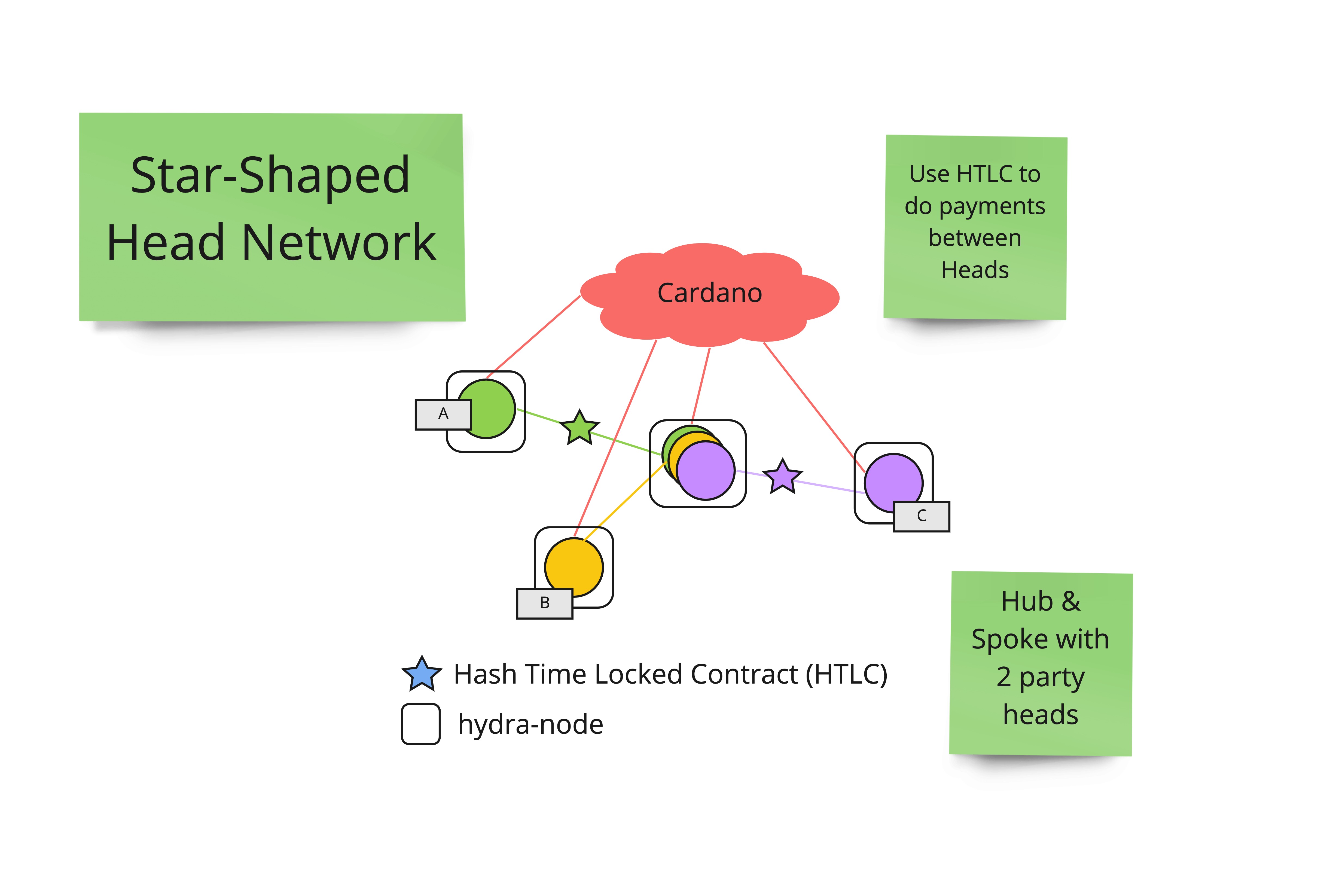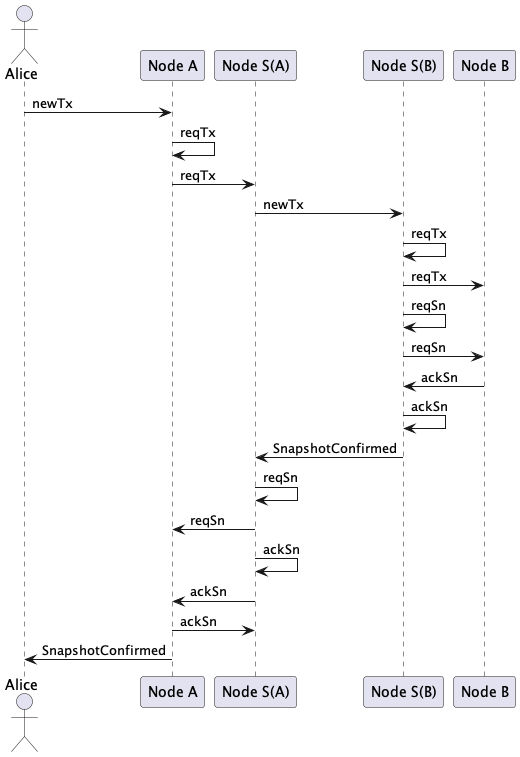Star-shaped head network
🛠 This document is a work in progress.
This document details the behavior of the so-called star-shaped Hydra network.
Summary
A star-shaped Hydra network, or more precisely a star-shaped heads network, comprises:
- A central server node that provides 'head-as-a-service' with low expected downtime, likely operated by a company or organization equipped to host this service.
- Client nodes, which may be DApp instances or mobile/personal wallets. These nodes might not always be online and can come and go.

Client nodes aim to interact with each other efficiently and at low cost using a layer 2 solution, with all the Hydra safety guarantees, but without the operational burden of maintaining an always-online 'full' Hydra node. This might involve using an embedded version of the node or a lightweight variant. Potentially, hundreds or even thousands of such client nodes exist, though they are not always active simultaneously.
Client nodes establish pairwise heads (eg, channels) with the server. This setup is simpler than with a normal multiparty head because the server has a well-known identity, and the client can always provide the needed parameters (keys, IP) to the server when setting up the head using a specific service, the details of which are outside the scope of this document.
Transactions that a client node posts in 'its' head should be reflected by the server into the other heads it maintains.
Questions:
- Is it expected for the pairwise heads to have varying 'durations'? For example, a client comes, opens a head, conducts some activities, and closes it, while other heads maintained by the same server stay open.
- How does the server provide guarantees preserving Hydra heads' basic safety property for each pairwise head?
- The diagram suggests using Hash Time-Lock Contracts (HTLC) to ensure the client can always retrieve its UTXOs if the server does not properly route the transaction to its destination.
- What kinds of transactions should be supported? HTLCs are suitable for payment-style transactions but not necessarily for DApps, unless adapted.
- It seems to be assumed implicitly that the server can 'route' a transaction from one head to the appropriate head, implying it 'understands' the addresses of UTXOs posted in heads.
On-chain transactions
The diagram below represents the lifecycle of two pairwise heads between Alice, Bob, and the server.

Remarks:
- It is assumed that transactions occurring in one head are reflected in the other, resulting in a consistently final UTXO
c- Both heads must start with the same initial UTXO set, which is challenging to implement (highlighted in red in the diagram)
- If the final UTXO set is consistent, then it can be fanned out by any party. However, this could result in one
ν_headstaying dangling and becoming unspendable as it would recreate an already existing UTXO (grayed out transaction in the diagram).
- The lifecycles of the heads are interconnected: when one is closed, the other must also be closed, as ensured by the server.
Off-chain transactions
The following diagram depicts the sequence of messages exchanged between various nodes to ensure transaction propagation.

Remarks:
- The server is represented by two nodes,
M(A)andM(B) - The
newTxissued byAlicethrough her node will be propagated by the server toBob's node asnewTxas well - This diagram does not account for any additional transactions the server might need to post to provide guarantees to either Alice or Bob (for example, an in-head HTLC transaction)
- To ensure consistency of snapshots, the server is presumed to always act as the leader, ie, the one triggering the emission of a snapshot.

